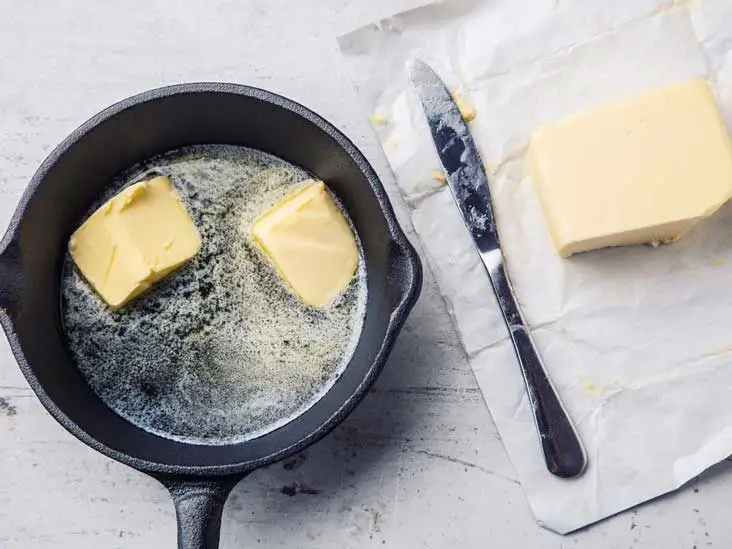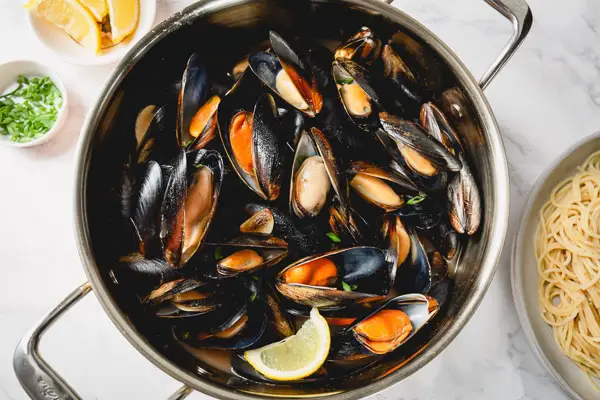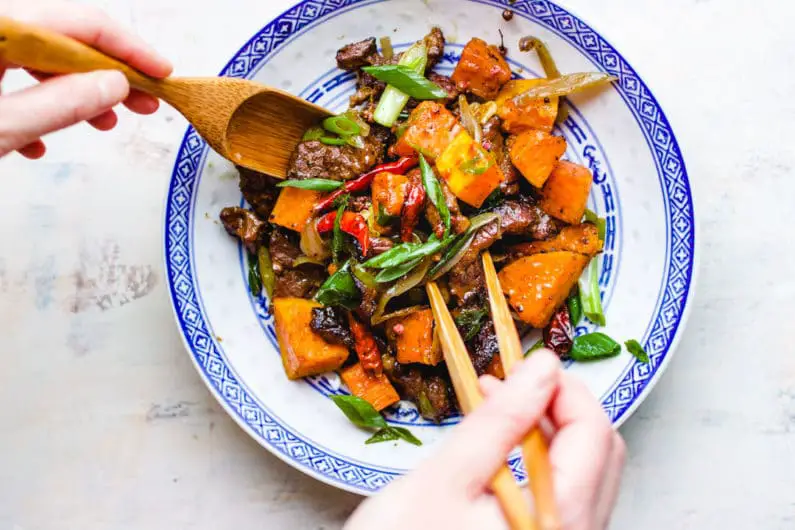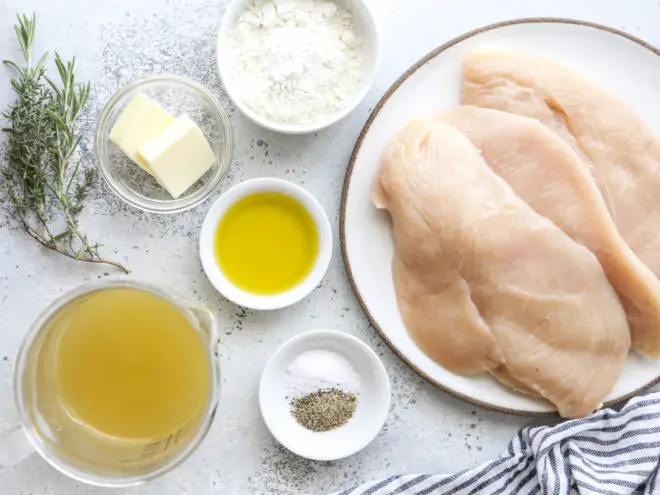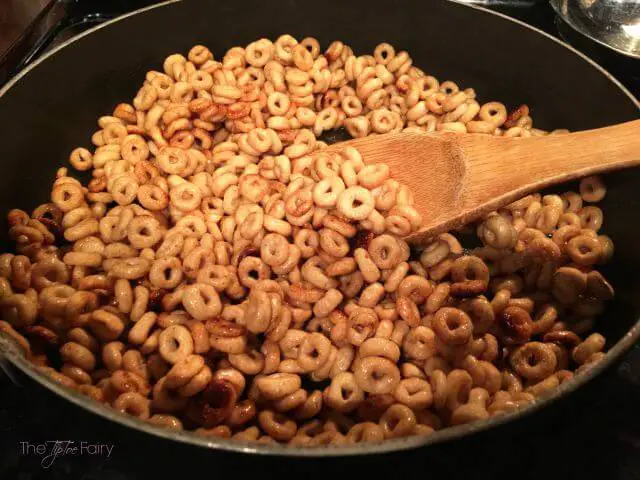Margarine is a popular alternative to butter as it contains less saturated fat and cholesterol, making it a healthier option. With its creamy texture and taste, margarine has become an essential ingredient in many dishes. However, can you use margarine for frying food? In this article, we will explore the question of whether you can fry with margarine.
Introduction
Margarine is a type of spread made from vegetable oils and water. It is produced through a process that involves hydrogenation or blending oils to make them more solid at room temperature. Margarine is used as a substitute for butter because it contains fewer calories and less saturated fats than animal-based products. The first margarine was created in France in the 1860s as an inexpensive substitute for butter. The popularity of margarine continued to grow when butter became scarce during World War II.
When comparing butter and margarine, the primary difference is that one comes from dairy while the other does not. Butter is made by churning cream or milk whereas margarine comes from plant-based oils. Since butter contains animal products, it is not suitable for vegetarians or vegans.
Can Margarine be Used to Fry Food?
Frying food involves cooking it in hot oil over high temperatures, causing a chemical reaction known as oxidation to occur which leads to browning and flavor development known as the Maillard reaction. However, some oils are less suitable for frying because they have low smoking points leading them to break down at high temperatures – releasing toxic fumes in the process.
The smoking point refers to the temperature at which an oil begins to break down and start smoking. At this point, harmful free radicals are produced that can cause oxidative damage to cells – leading to cancer, heart disease, arthritis among other health complications.
The smoke point varies across different types of oil; thus, some oils are better suited for frying compared to others. When compared with other popular frying oils like vegetable oil, Canola oil and olive oil, Margarine has the lowest smoke point. The low smoke point makes margarine unsuitable for high heat cooking methods such as deep frying or sautéing at high temperatures.
How Safe is Frying with Margarine?
Margarines contain trans fats, which are unsaturated fatty acids that have been hydrogenated – making them more solid at room temperature. Trans fats can cause a rise in LDL (bad) cholesterol levels leading to heart disease and other health complications.
The amount of trans fat present in margarine depends on the type and brand; some brands contain higher amounts than others. Several studies have linked trans fats to increased risk of cancer, diabetes and heart disease. Consuming large quantities of these harmful compounds could lead to long-term health consequences.
Does Margarine Affect the Taste and Texture of Fried Food?
The taste and texture of food cooked with margarine differ from those cooked with other oils. Foods fried in margarine tend to be less crispy when compared to those fried in vegetable or Canola oil owing to its lower smoke point.
However, margarine has an advantage over other oils: it does not give off a distinctive flavor that may interfere with the final taste of your dish. Unlike some vegetable oils which might impart a specific aroma or flavor on what you’re cooking, margarine only slightly affects the taste but leaves room for the original flavors of your ingredients to come through.
How to Fry with Margarine Successfully?
If you must use margarine for frying purposes, it is essential first to understand that it is only suitable for low-heat cooking methods such as baking or sautéing over medium-high heat; furthermore, here are some tips on how best you can use margarines:
Cooking Temperature for Frying with Margarine
When using margarine for frying purposes, ensure that you heat it up over low heat to avoid it burning hence decreasing the smoke point. However, if you must use higher temperatures, add some other oil with a high smoke point like vegetable or Canola oils.
Tips on How to Cook Your Dish Perfectly
When cooking with margarine, use a non-stick skillet that minimizes the need for excessive use of oil as this also protects your margarine from quickly breaking down. Ensure that all ingredients are thoroughly coated with margarine before cooking- this ensures even cooking and prevents any of your ingredients from sticking to your pan.
Best Practices When it Comes to Using Margarine as a Frying Medium
Avoid using lower quality margarines which could have a high percentage of trans fats – this only leads to health concerns like exposing you to free radicals. Also, ensure you store your margarine(s) according to the manufacturer’s instructions as keeping them below or above room temperature could lead them grease faster.
Alternative Uses for Margarine
Margarine can be used in various other ways besides frying and cooking purposes:
Baking with Margarine – Can Margarine Replace Butter?
Yes! margarine can replace butter when baking; the resulting product is just slightly different because of the different melting points of margarines compared to butter. Nevertheless, incorporating it into baked goods such as cakes, cookies and pies won’t significantly affect the outcome.
Use as a Spread Instead of Other Options like Jam or Peanut Butter
Margarine provides an alternative option for people who want a savory spread that can be paired well with bread/toast. It’s quite versatile since you can flavor it with herbs as desired- adding an explosion of flavor beyond just regular jam.
Using Margarine in Vegan Dishes as a Substitute for Animal Products Like Cream, Yogurt, etc.
Margarine is entirely vegan-friendly; thus, it’s ideal for enhancing the flavor and texture profile of numerous plant-based dishes such as mashed potatoes and sauce.
Conclusion
Margarine is a healthier alternative to butter that can be used for cooking, baking, or as a spread. However, due to its low smoke point and high trans fat content, it’s not advisable for high-heat cooking or prolonged use. For best results when using margarine in your dishes – follow the manufacturer’s instructions on storage and preparation to ensure you get optimal flavor and consistency from your dish.
Q&A
Q. Can margarine be used as a substitute for cooking oil?
Yes, margarine can be used as a substitute for cooking oil when frying. However, it should only be used in moderation due to its high fat content.
Q. Does frying with margarine affect the flavor of the food?
When fried with margarine, some foods may have a slightly different taste compared to when they are fried with other oils due to the distinct flavor of margarine.
Q. Does using margarine make fried foods crispy?
Margarine can help create crispy fried foods as it has a higher smoke point than butter and maintains its integrity during high-heat cooking.
Q. Is frying with margarine healthier than using other oils?
While margarine is lower in saturated fat compared to butter, it is still considered an unhealthy fat source due to its high content of trans fats. Therefore, it is advised to use healthier options like olive or avocado oil instead of margarine for frying purposes.
